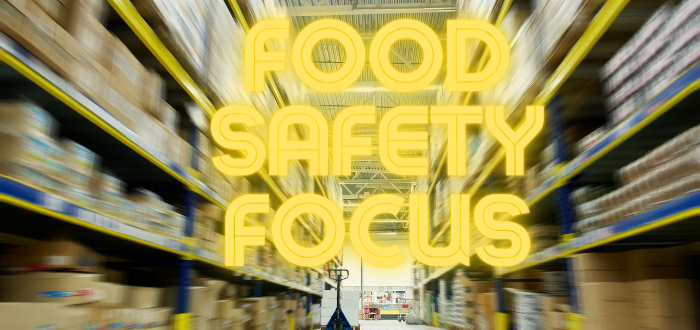Food Safety Focus | Cinnamon

Food Safety Focus
Hello All Team Members!
I hope this message finds all of you and your families safe and well,
Today I wanted to talk about one of the most sought-after ingredients in history; a spice that is used frequently in many recipes, especially during the holiday season… Cinnamon! Let’s take a closer look, shall we?
Cinnamon harvested from the inner bark of several tree species called “Cinnamomum” has been traded for thousands of years as a gift for rulers and the most powerful elite. Having come to Egypt at around 2000 BC, ancient Egyptians even used cinnamon to help in their process for making mummies.
True cinnamon, called “Cinnamomum verum” which translates to “true cinnamon” in Latin, is native to India, Bangladesh, Sri Lanka (formerly Ceylon) and Myanmar (Burma). Some people have claimed that cinnamon originally came from China but the cinnamon native to China is called “Cinnamomum cassia”. Both are part of the Laurel “Lauraceae” family. Only a few species of Cinnamomum are grown for commercial use today.
The source of cinnamon was a mystery to many over the ages as people would protect their sources to get a better price advantage in the market. An old legend claimed that cinnamon was collected from the nests of cinnamon birds, as a way to charge their customers more for the spice. It was reported that just at the turn of the century AD, the cost of around 12 oz. of cinnamon cassia was worth an entire week’s wages for the common worker and a more expensive variety of cinnamon could cost over 10 times that amount!
Thankfully cinnamon is much easier to find today and the cost is far more reasonable, so you can enjoy this delicious and valuable spice with all your favorite recipes.
I hope you enjoyed this message and as always, thank you for all of you do to provide safe food for our families, each and every Day!
Justin Straka Food Safety Manager
- Food Safety Focus | Fruitcake
- Food Safety Focus | Food Safety
- Food Safety Focus | Focus on Cotton Candy
- Food Safety Focus | Focus on Trailer Inspections
- Food Safety Focus | Cinnamon
- Food Safety Focus | The Winds of Stress
- Food Safety Focus | National Taco Day
- Food Safety Focus | MHE Safety
- Food Safety Focus | Peanut History
- Food Safety Focus | Pre-Cooled is the Coolest Way to Be
- Food Safety Focus | Marshmallows
- Food Safety Focus | Sanitation
- Food Safety Focus | Wrap It Up Clean
- Food Safety Focus | Focus On Popsicles
- Food Safety Focus | National Hotdog Day
- Food Safety Focus | Apple Turnover Day
- Food Safety Focus | Safety Culture
- Food Safety Focus | National Cucumber Day
- Food Safety Focus | Pet Food Safety
- Food Safety Focus | Asparagus
- Food Safety Focus | Happy Walnut Day!
- Food Safety Focus | Talkin’ Trash
- Food Safety Focus | Hazard Analysis
- Food Safety Focus | Trailer Inspections
- Food Safety Focus | A Place for Everything
- Food Safety Focus | The Right Temperature
- Food Safety Focus | Don’t Stress
- Food Safety Focus | Seals
- Food Safety Focus | I Love It When A Plan Comes Together!
- Food Safety Focus | Baby Formula News
- Food Safety Focus | Space Food
- Food Safety Focus | I Love It When A Plan Comes Together!
- Food Safety Focus | Focus On Taking Time Off
- Food Safety Focus | No Added Flavor Needed
- Food Safety Focus | Focus
- Food Safety EXTRA | The Turkey Prince
- Food Safety Focus | Doors & History
- Food Safety Focus | Keep Common Sense Common
- Food Safety Focus | Gourmet Coffee Legend and History
- Food Safety Focus | EMA
- Food Safety Focus | New Allergen – Sesame
- Food Safety Focus | Food Poisoning
- Food Safety Focus | Cell Based Meat
- Food Safety Focus | No Waste is a Tasty Idea!
- Food Safety Focus | Floors
- Food Safety Focus | Hand Washing Culture
- Food Safety Focus | Falling Cases
- Food Safety Focus | Turkey Myths
- Food Safety Focus | Root Cause Analysis
- Food Safety Focus | Chemicals
- Food Safety Focus | Focus on Drips
- Food Safety Focus | Freezer Gear Housekeeping
- Food Safety Focus | Eat and Drink in the Right Place
- Food Safety Focus | Food Safety During the Storm
- Food Safety Focus | High Quality H20
- Food Safety Focus | Who is Responsible for Food Safety?
- Food Safety Focus | Baby Food & Avoiding Toxic Metals
- Food Safety Focus | MHE Impact
- Food Safety Focus | Kill Step
- Food Safety Focus | MHE Inspections
- Food Safety Focus | Product Weight Limits
- Food Safety Focus | Awareness Part 2
- Food Safety Focus | Awareness Part 1
- Food Safety Focus | FDA Reported Listeria Outbreak
- Food Safety Focus | Listeria
- Food Safety Focus | Hot Dogs
- Food Safety Focus | Recall Classes
- Food Safety Focus | Mock Recall – Getting Started
- Food Safety Focus | Don’t Cause a Recall
- Food Safety Focus | Product Hold
- Food Safety Focus | Labels and Recalls
- Food Safety Focus | Allergen Update – Sesame Seeds
- Food Safety Focus | Ceilings
- Food Safety Focus | Floors
- Food Safety Focus | Damage Control
- Food Safety Focus | Pest Control
- Food Safety Focus | Dumpster Duty
- Food Safety Focus | Standing Water
- Food Safety Focus | Wrap Care
- Food Safety Focus | Foreign Matter
- Food Safety Focus | See Something, Say Something
- Food Safety Focus | Pallet Identification
- Food Safety Focus | Tunnel Vision
- Food Safety Focus | Super Bowl Safety
- Food Safety Focus | Receiving Temps
- Food Safety Focus | Food Safety Attitude
- Food Safety Focus | MHE
- Food Safety Focus | Pallets, Racks & Racking
- Food Safety Focus | Security
- Food Safety Focus | Hand Washing Importance
- Food Safety Focus | Holiday Food Safety
- Food Safety Focus | Accurate Record Keeping
- Food Safety Focus | Importance of Training
- Food Safety Focus | Thermometer Checks
- Food Safety Focus | Allergen Storage
- Food Safety Focus | Pest Control
- Food Safety Focus | PPE
- Food Safety Focus | Food Safety Culture



